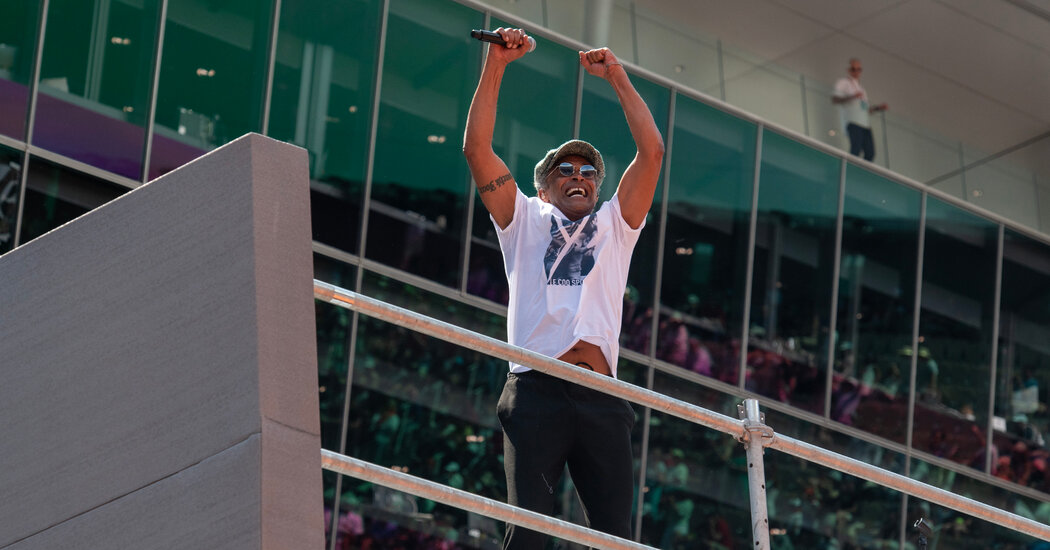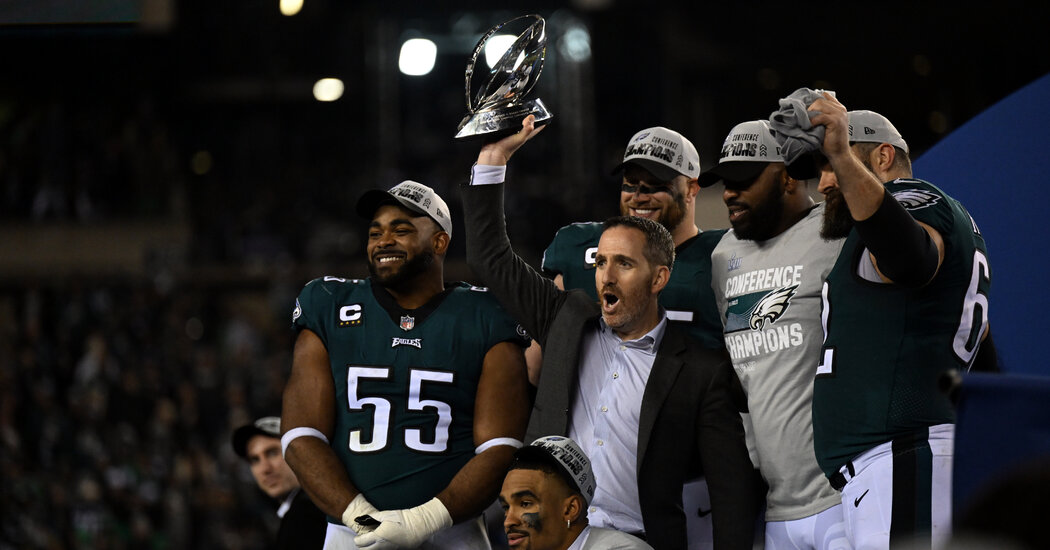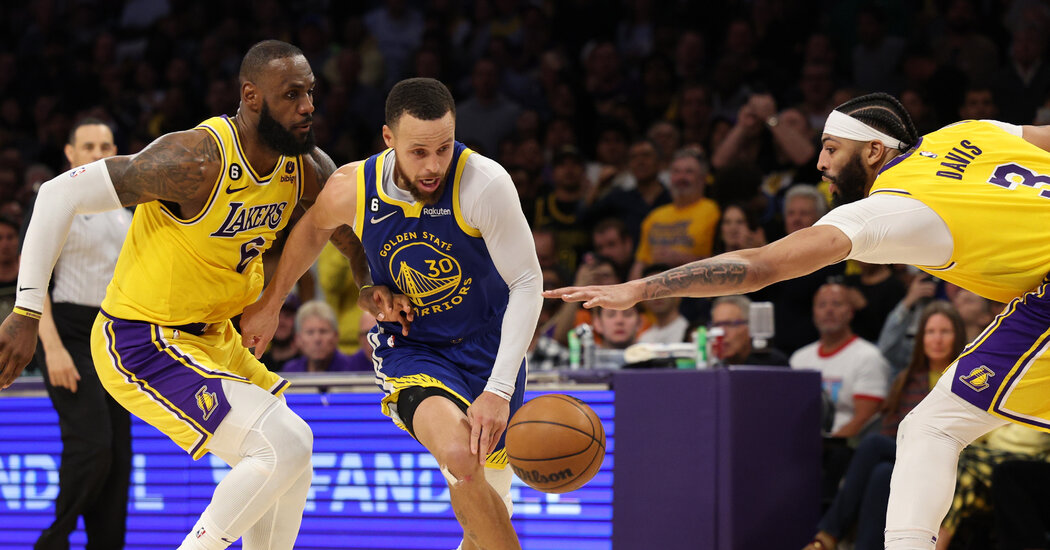‘Different Than What You Expect From a Los Angeles Golf Course’
For much of Collin Morikawa’s life, the Los Angeles Country Club was a mystery.
The course, designed in 1921 by George C. Thomas Jr. with its North Course restored by the architect Gil Hanse in 2010, was off-limits to most — even Morikawa, a son of Southern California and one of its most promising golfers.
But entering this week’s U.S. Open, he is one of a handful of professionals with meaningful experience at the club, which has not hosted a PGA Tour event since 1940 and has never been in the spotlight of a major tournament. Its most recent high-profile competition was the 2017 Walker Cup, an amateur team event played every two years. The United States won that year with a team that included Scottie Scheffler and Morikawa, who first got to play the course when he was a student at the University of California, Berkeley.
“It’s demanding — it’s very different than what you expect from a Los Angeles golf course,” Morikawa said in an interview. “The grasses are very different. The West Coast is known for Kikuyu grass and very sticky poa annua greens, bumpy greens in the afternoon. That’s not what Los Angeles Country Club is.”
Instead, players will confront a course of Bermuda grass, with bentgrass on greens that Morikawa sees as PGA Tour-like because of their slopes and designs. This year’s Open will include five par-3 holes for the first time since 1947, when Lew Worsham beat Sam Snead in an 18-hole playoff at St. Louis Country Club.
Morikawa does not see that as a problem.
“Just because there is a heavy focus on par-3s at L.A.C.C. doesn’t mean it’s not going to be a great championship golf course,” he said.
No. 6
Par 4, 330 yards
The club’s first five holes pose challenges, but in Morikawa’s mind, it is not until No. 6 that the course offers a fearsome proposition of risk and reward. For the field, it will appear to be an eminently drivable par-4, even with a blind tee shot.
But if the greens are as ferocious as the United States Golf Association hopes, good luck. The depth of the green demands perfect distance control, Morikawa said. The ideal landing zone is perhaps five yards in diameter and a bad bounce sends the ball toward the long rough.
“Let’s just say it’s 295, 300 yards,” he said. “From that distance, no one is that accurate to hit every drive within a five-yard diameter.” Instead, he said he expects players to layup, often from somewhere between 215 and 240 yards, leaving enough space to the green to test their wedge games. (Morikawa said this week that his caddie had persuaded him to consider going for it instead of laying up.)
“When you show up on six, you’re going to be thinking birdie,” he said. “But you’re going to see a lot of bogeys because of how difficult the strategy is going to be.”
Nos. 6 and 8 — a par-5 hole measuring 547 yards — at Los Angeles, he said, can be like the second and third holes at Augusta National Golf Club, where players eagerly seek the low scores that are there for the taking.
“You want to walk out under par, you have to play smart and you can’t be too aggressive,” he said.
No. 9
Par 3, 171 yards
Fairly few ninth holes are par-3s — the last U.S. Open to have a par-3 on No. 9 was the 2017 edition at Erin Hills in Wisconsin — but the trek back toward the clubhouse includes one Morikawa has judged “deceiving.”
A back pin might be merely 200 yards away, but Morikawa warned that the challenge comes from the slope of the green.
“With fast greens, if you’re behind the hole, you’re going to be hoping for a two-putt par,” he said. Excessive aggression could very well land a player and his ball in the bunker and poised for a bogey.
“For the most part, you’re going to be putting from the middle of the green,” Morikawa said. “You’re going to take four pars and walk out of there very, very happy.”
No. 11
Par 3, 290 yards
Get over the distraction, on a clear day at least, of the Los Angeles skyline, and face the downhill hole that is the course’s longest par-3. Thanks to its length, Morikawa figures it will be playing somewhere between 200 and 270 yards.
“It’s going to be tricky because you have to land it in the right spot,” said Morikawa, who predicted that some in the field would see their tee shots land perhaps 15 yards short of the green and end up dealing with a 30- or 40-yard pitch shot.
“If you miss it left, it’s going to run off,” he said of the hole, where the front of the green includes a slope that can fuel headaches if a player is too aggressive toward a back pin. “If you miss it right, it’s going to run off.”
Even though the hole is formally a par-3, Morikawa predicted at least some high scores because of its length.
No. 13
Par 4, 507 yards
When Morikawa imagines a quintessential par-4 hole at a U.S. Open, he pictures No. 13: “Long, demanding. You’re going to have a long iron in, the tee box is miles away from the 12th green.”
OK, maybe not miles, but it might feel like it after 12 holes of championship golf.
And just about everyone — long hitters, short hitters, guys in between — is going to need to keep his tee shot to the left.
“Long hitters who hit it right, it’s going to kick down the slope, right into the right rough,” said Morikawa, describing the perils for much of the modern Open field. In Los Angeles, the challenge with the right rough is that it all but forces the player to take a second shot with little visibility.
A poor drive, Morikawa said, might require a 5-wood.
He is expecting plenty of up-and-downs, and lag putt after lag putt, on a test that has plenty of angles along the way.
“It’s a very long hole, but the green in regulation percentage is not going to be there,” he said.
No. 14
Par 5, 623 yards
The lone par-5 hole on the back nine, No. 14 first demands that players decide whether they want to try to carry its right bunker. Even with the distances pros are logging off the tee, there will be only a handful who can carry the bunker and will also dare to try it, knowing that they need a drive of 310 yards or so.
Edging toward the left, Morikawa said, will leave a player farther from the hole — and “it’s not the easiest layup because the fairways are going to be so narrow.” Being stuck in the rough for a third shot, he said, can be especially troublesome if a right pin is in play for the day because of how the green slopes.
“No. 14 is going to require a lot of precision,” Morikawa said. “With 14, if you are a long hitter, you can go for it, push it up there, have a nice little wedge shot and make birdie.”
There will be what Morikawa classifies as “stupid bogeys” since the hole is a par-5, ending a four-hole stretch where he senses the Open will not be won, but can be lost.
“I think I’ll be pretty happy if I walk out of those holes even par throughout the week,” he said.


